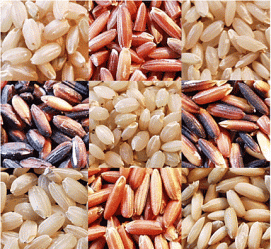Global Stockpile causes Vietnam’s Rice Prices to Drop

Asia has long been dominant in rice production, consumption, and trade. And Vietnam being the world’s second largest rice producer, it places the country in a favorable position in terms of export trade. Early this year, the announcement for high demand for rice exports in the global market gave Vietnam a promising headstart. But after the summer-fall rice harvest went full-swing, the country’s rice growers and traders are growing wary over the sagging foreign demand and rise in the global supply.
In fact, with supplies coming in quicker than the global demand, a global rice surplus is very evident. Many factors have caused the stockpile including the recent efforts from several countries like Philippines and Malaysia in boosting their own rice production along with their food security programs. Furthermore, the Food and Agriculture Organization (FAO) of the United Nations announced that India’s rice output may rise by 13 percent this year. Some other big rice producers such as China, Indonesia and Bangladesh have also seen bumper harvests.
Haggling Over the Price of Rice
Now, Vietnam is placed in a difficult position in peddling its rice overseas. With 2010’s global rice output estimated at 456 million tons and demand set at 454 million, United Nations estimate a stockpile of around 123.5 million tons. Thailand, known to be the world’s leading rice grower, is planning to sell off its rice stockpile before harvesting its November crop. Such move will largely punish prices of rice globally.
Vietnam had more than 1.8 million tons of rice in inventory by early June. The number is expected to further increase following the summer-fall harvest. Nearly half of the 1.7 million hectares of paddy rice in Vietnam’s southern region had been harvested. However, rice growers in the Mekong Delta, the nation’s largest rice producer, claimed having to sell its produce to buyers at VND3,000 (US$0.2) per kilogram - 20 percent less than what they make during the previous harvests.
Weather conditions often cause summer-fall crop production to cost farmers 20-30 percent more than their winter-spring harvests. This puts them in a losing end. On top of that, their crops are often plagued by pests which causes its quality to deteriorate and make it harder to sell.
Exploring Potential Markets
With rice now spilling over the global market, Vietnam is scurrying for markets abroad to nudge up the country’s export levels. Two of Vietnam’s largest rice importers, Philippines and Malaysia, had already imported sufficient low ranking rice volume. Apart from that, there is an increased cancellation on existing contracts between Vietnamese exporters to certain global markets starting the end of last year. Vietnam shipped 3.5 million tons outside the country during the first half of 2010. The figure represents a 4.9 percent drop compared to the same period last year.
The country is now looking to capitalize on Africa’s high demand. But trends are showing that payments from the country is very slow, sometimes reaching over a year after the delivery of products. Not all firms are very willing to take such risk. Some of Vietnam’s firms are also now seeking ways to penetrate Brazil and South America. If they succeed, the country’s rice export may improve. For now, it is too early to tell of its potential outcome.









